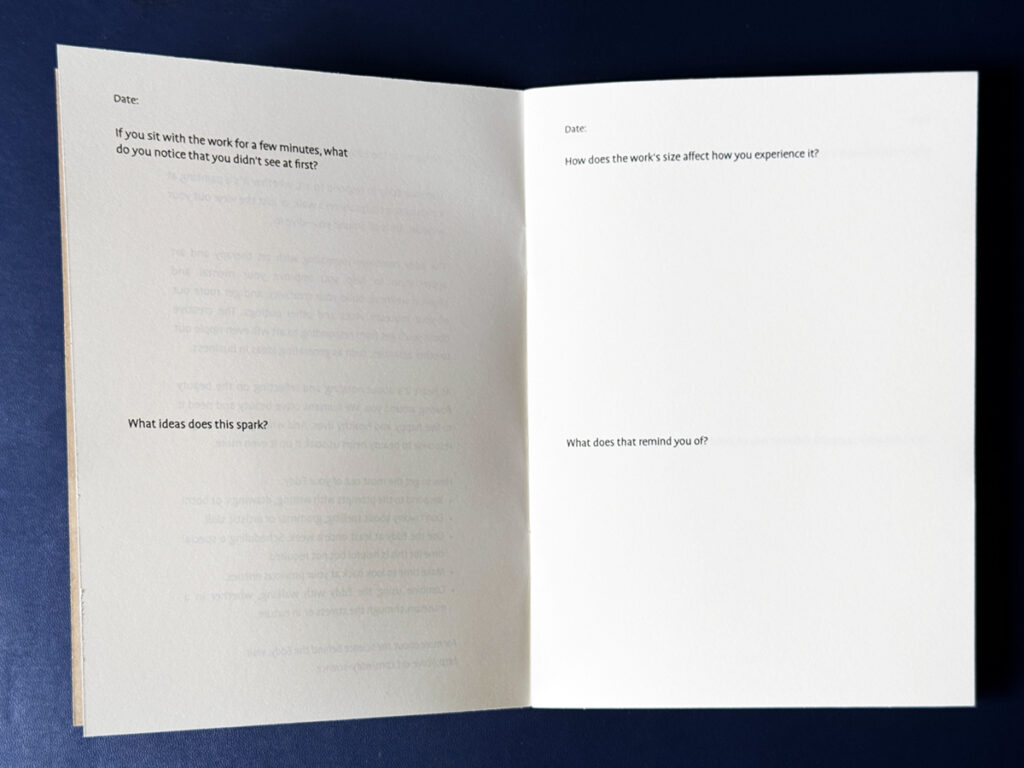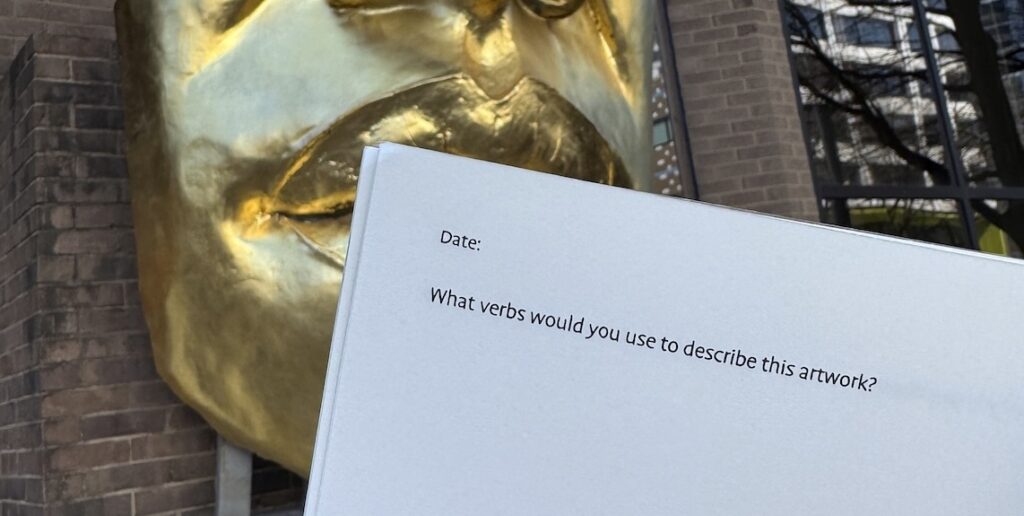The Eddy is pretty simple. Notebooks are a time-tested technology. Yet the Eddy design harbors a lot of thoughtful details that help make it your most effective companion for art experiences.
The Eddy combines the benefits of journaling with those of art appreciation to help you experience more creativity, reflection and calm.

Benefits of Journaling
The Eddy Art Response Notebook taps into the mental health benefits of journaling.
Keeping a journal helps manage anxiety, reduce stress and improve awareness. That’s why it’s a technique often suggested by psychologists. It can be hard to see ourselves and our situations objectively, especially when emotions are high. Writing in a journal can help create the space to do so.
Beyond mental health benefits, the research on journaling suggests a range of physical benefits as well, from lower blood pressure to improved organ function. People who journal also miss less work and get better grades in school.
But keeping a journal can be challenging, and the research suggests that having prompts to respond to can be a good way to build journaling into a habit. Eddy invites you to attend to a work of art and then connect it to your own life. Over time, using your Eddy will help you learn more about yourself.
Benefits of Art Appreciation
The benefits of experiencing art are beyond question. A review from the World Health Organization examined over 3,000 studies on the topic. The results show the role the arts play in promoting health, preventing health issues, and managing illnesses—both physical and mental.
Art therapy is one path to tapping the effectiveness of art. Typically art therapy involves making art, whether as part of a hobby or just as an outlet for fun.
But art appreciation creates similar effects, because it engages the same cognitive capacities as making art. It can also be a gateway for those who might want to make art but don’t know where to start or don’t yet feel confident in their creativity.
Art taps into something shared by all humans. It’s even deeper than language. Art has the unique capacity to allow us to experience new ideas and lenses on the world. It’s a conversation without words.
And beyond just art, observing beauty—whether manmade or natural—has also been shown to have similar physiological effects of normalizing the heart rate, blood pressure and stress hormone levels. And the best part is, writing about beauty allows you to double down on these benefits.
Finally, spending time viewing and reflecting on art has been shown to increase creativity, which even transfers to other domains, such as generating ideas in business.

Getting the Most out of Your Eddy
Here are some ideas to try:
- Use your Eddy at least once a week. Setting aside scheduled time can be helpful.
- Combine your Eddy with walking—in a museum, through the streets, or in nature.
- Respond to the prompts with drawing, writing, or both!
- Don’t worry about spelling, punctuation or grammar—or your artistic skills.
- Give yourself some time occasionally to look back on your previous entries.
